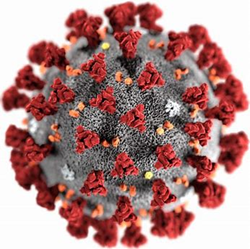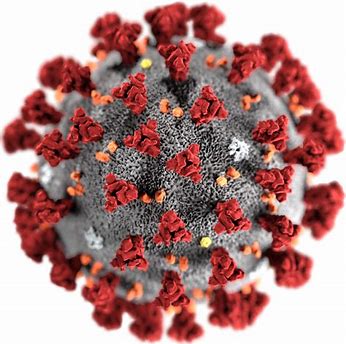
ACE2 mRNA level can serve as a predictive biomarker of COVID-19 mortality rate. Hospitalized COVID-19 patients can be stratified on admission based on their ACE2 mRNA levels, so that the corresponding level of care can be planned and prepared well in advance.
Zug, Switzerland (PRWEB)
April 05, 2020
INTRODUCTION
As the world’s first AI-biopharma company that has discovered and publicized the precise aetiology and pathology of COVID-19[1], we are committed to the non-profit dissemination of our COVID-19 discoveries and the public validation of our COVID-19 clinical predictions.
The SARS-CoV-2-mediated post-entry suppression of ACE2 mRNA expression in host cells is one of our contrarian pathology-based clinical predictions, because it appears to be self-conflicting for SARS-CoV-2 to bind ACE2 via S to enable viral entry on the one hand[2], and to suppress ACE2 expression to enhance viral replication on the other hand[1]:
“After entry, SARS-CoV-2 hijacks the PI3K signaling of ACE2-expressing host cells to drive viral replication. Furthermore, SARS-CoV-2 enhances the activation of the distal promoters of the ACE2 gene in the host cells, which further suppresses the ACE2 expression in the host cells and disrupts the normal homeostatic functions of the host cells.”[1]
“The ACE2 distal promoter transcript (DPT) is an evolutionarily conserved binding motif of ACE2 inhibitors, whereas the ACE2 proximal promoter transcript (PPT) is an evolutionarily conserved binding motif of ACE2 enhancers[5]. The DPT/PPT ratio is tissue-specific such that the DPT is significantly more than the PPT in the lung (>49-fold), whereas the PPT is significantly more than the DPT in the kidney, brain, and heart (>20-fold)[6]. It is unusual that the ACE2 DPT/PPT ratio, rather than the ACE2 genotype, determines ACE2 transcript levels.” [1]
We also shared the further pathology-based clinical prediction that ACE2 deficiency is a core causal co-driver of COVID-19 clinical outcomes[3]:
“The clinical outcomes of COVID-19 are driven by the tissue-specific and patient-specific co-development of ACE2-deficiency-induced injury and innate-adaptive-imbalance-induced lymphocytopenia.” [1]
“Therefore, lungs are selectively vulnerable to ACE2 deficiencies induced by COVID-19, and lung injuries are the predominant clinical features of COVID-19.” [1]
When that pathology-based prospective prediction was first announced to the public on March 7, 2020[3], it was also contrarian to the mainstream view that (i) populations with lower baseline ACE2 expression level are less prone to SARS-CoV-2 entry and infection, and (ii) East Asians are more vulnerable to COVID-19 than Europeans/Americans because the human genomic data published on February 24, 2020, show that East Asians have much higher allele frequencies in most of the gain-of-function eQTL variants of ACE2 (Figure 1).
DATA VALIDATION
Those two contrarian prospective clinical predictions can be validated by analyzing the relationship between population-specific ACE2 genome data and population-specific COVID-19 mortality data.
As of April 4, 2020, there are 13 countries categorized into four region-specific populations following the definitions in Figure 1—Chinese (CHN), Non-Chinese East Asians (EAS), Europeans (EUR) and AdMixed Americans (AMR)—with each country having reported more than 10,000 confirmed COVID-19 cases (Table 1).
As of April 4, 2020, the total number of confirmed COVID-19 deaths per million population in those 13 countries are presented in Table 2.
Furthermore, the population-specific allele frequencies of 11 common eQTL variants associated with high expression of ACE2 in tissues are presented in Table 3.
Now we can start analyzing the relationship between population-specific ACE2 genome variants and population-specific COVID-19 mortality rates (Table 4).
Both the population covariance (-6.46) and the Pearson correlation (-0.88) clearly indicate that the population-specific ACE2 mRNA levels have a strong negative relationship with the population-specific COVID-19 mortality rates.
In other words, populations with higher baseline ACE2 mRNA levels (e.g., East Asians) would be less prone to the ACE2-deficiency-driven development of critical COVID-19 clinical outcomes, whereas populations with lower baseline ACE2 mRNA levels (e.g., Europeans) would be more prone to the ACE2-deficiency-driven development of critical COVID-19 clinical outcomes.
Therefore, the real-world data have validated our contrarian pathology-based clinical prediction that ACE2 deficiency is a positive driver of COVID-19 clinical outcomes[3], and thus invalidated the mainstream belief that ACE2 deficiency is a negative driver of COVID-19 clinical outcomes.
The real-world data further demonstrate that AI-based disease modelling and clinical predictions can deliver much better predictive power and explanatory power than conventional approaches for novel diseases with limited clinical data and short response timeframes.
PREDICTIVE BIOMARKER
Based on our pathology-based clinical predictions which are validated both by the real-world data as above and by the ex vivo data in human organoids[7], we thus further propose that ACE2 mRNA level can serve as a predictive biomarker of COVID-19 mortality rate, and even a surrogate biomarker of COVID-19 clinical progression.
Hospitalized COVID-19 patients can be stratified on admission based on their ACE2 mRNA levels, so that the corresponding level of care can be prepared well in advance.
Suspected COVID-19 patients can be stratified if they can receive the test of ACE2 mRNA levels at the same time when they receive the test of SARS-CoV-2 RNA levels.
TREATMENT PRIORITY
Contrary to the mainstream belief, COVID-19 would have a much more rapid and severe progression in Americans/Europeans compared with East Asians, because Americans/Europeans have much lower baseline ACE2 expression than East Asians due to their much lower allele frequencies in most of the gain-of-function eQTL variants of ACE2[4].
As our aetiology and pathology show that COVID-19 suppresses ACE2 expression for viral replication, Americans/Europeans with much lower baseline ACE2 expressions are much more prone to developing critical clinical outcomes than East Asians.
Therefore, on top of increasing the supply of masks and ventilators, it is much more important and urgent for European and American countries to prioritize the discovery and development of effective and scalable treatments for critically ill patients than for Asian countries.
Critically ill COVID-19 patient population has a 61.5% mortality rate[8] with sepsis (100%), respiratory failure (98%), and ARDS (93%) as the top 3 clinical outcomes of non-survivors[9], and there will be more critically ill patients of younger age groups in European and American countries due to the population-specific lower baseline ACE2 expression levels.
It is equally essential to discover scalable treatments that are cost-effective and globally available to reduce the mortality rate of COVID-19 in various European and American countries of different infection control capabilities.
REFERENCES
1. Lovetrue, B. The AI-Discovered Aetiology of COVID-19 and Rationale of the Irinotecan+Etoposide Combination Therapy for Critically Ill COVID-19 Patients. (2020). doi:10.20944/PREPRINTS202003.0341.V1
2. Wrapp, D. et al. Cryo-EM structure of the 2019-nCoV spike in the prefusion conformation. Science (80-. ). 367, 1260–1263 (2020).
3. Demiurge AI Discovers the Complete Aetiology of COVID-19 and the Optimal Treatment Strategy for COVID-19. Available at: http://www.prweb.com/releases/demiurge_ai_discovers_the_complete_aetiology_of_covid_19_and_the_optimal_treatment_strategy_for_covid_19/prweb16966447.htm. (Accessed: 1st April 2020)
4. Cao, Y. et al. Comparative genetic analysis of the novel coronavirus (2019-nCoV/SARS-CoV-2) receptor ACE2 in different populations. Cell Discov. 6, 4–7 (2020).
5. COVID-19 Map – Johns Hopkins Coronavirus Resource Center. Available at: https://coronavirus.jhu.edu/map.html. (Accessed: 1st April 2020)
6. Coronavirus deaths: The stark differences in countries’ case fatality rates, explained – Vox. Available at: https://www.vox.com/2020/4/1/21203198/coronavirus-deaths-us-italy-china-south-korea. (Accessed: 2nd April 2020)
7. Monteil, V., Kwon, H., Prado, P., Hagelkrüys, A. & Wimmer, R. A. Inhibition of SARS-CoV-2 infections in engineered human tissues using clinical-grade soluble human ACE2. (2020). doi:10.1016/j.cell.2020.04.004
8. Yang, X. et al. Clinical course and outcomes of critically ill patients with SARS-CoV-2 pneumonia in Wuhan, China: a single-centered, retrospective, observational study. Lancet Respir. Med. 2600, 1–7 (2020).
9. Zhou, F. et al. Clinical course and risk factors for mortality of adult inpatients with COVID-19 in Wuhan , China : a retrospective cohort study. Lancet 6736, 1–9 (2020).
About Demiurge Technologies
Demiurge Technologies is a research-based AI-biopharmaceutical company that transforms publicly available life science data into precise disease models in areas with unmet medical needs. The company pioneers a self-correcting scientific approach that validates disease models with the accuracy of AI-based predictions of phase 3 clinical trial outcomes. The company also pioneers a self-sustaining business that commercializes disease models by accelerating the AI-based discovery and development of innovative medicines. Demiurge started in 2016 with headquarters in Switzerland.
AI has been an emerging powerful approach to deeper disease understanding and faster drug discovery, yet it must be put to the most rigorous test to prove its worth under public scrutiny. Demiurge has predicted the outcomes of more than 90 phase 3 clinical trials across multiple therapeutic areas and achieved more than 80% accuracy. Furthermore, we have been inviting the public to witness our future predictions of clinical trial outcomes on Twitter (@DemiurgeTech).
Therefore, we officially put forward AI-based discoveries of the precise aetiology and pathology of COVID-19 and the candidate treatments for COVID-19 as scientific hypotheses only and invite the world to validate their potential to solve the unprecedented global crisis posed by COVID-19.
Demiurge urges everyone to refrain from believing in the efficacy and safety of any COVID-19 candidate treatments before any clinical data come in.
Disclaimer
This material is intended for information purposes only and is provided without any warranty of any kind, either expressed or implied. These statements are not guarantees of future performance, condition or results. Figures and graphs in this presentation are for illustration only and are may not match the actual scale. Actual results may differ materially from those in the forward‐looking statements as a result of a number of factors. Demiurge Technologies AG (“Demiurge”) undertakes no duty or obligation to publicly update or revise the forward‐looking statements or other information contained in this document. You should not view information related to the past performance of Demiurge or its affiliated funds or information about the market, as indicative of future results, the achievement of which cannot be assured. While some information used in this document may have been obtained from various published and unpublished sources considered to be reliable, Demiurge Technologies AG neither guarantees its accuracy or completeness nor accepts liability for any direct or consequential losses arising from its use. Amounts and percentages may reflect rounding adjustments and consequently, totals may not appear to sum.

